How to Recover Corrupted Files from a USB Flash Drive in 2025
You plugged your flash drive into your PC and noticed that you could not access the files you saved inside because the drive was corrupted? Basically, you cannot open corrupt drives on Windows computers or any computer system. To regain access to the files saved in such drives, you need a data recovery solution to recover them. This article explains how to recover files from corrupted flash drives. It is a smooth, seamless process when you use the right professional data recovery software.
The flash drive got corrupted or damaged and unreadable? Let's fix it with DiskInternals Recovery software
DiskInternals Uneraser and Partition Recovery are two powerful software solutions capable of recovering lost data from external storage media, including flash and thumb drives. The Uneraser software can also recover files from memory cards and corrupt USB drives. It is an easy-to-use recovery software for Windows PC users.
This data recovery solution can recover over 1000 file types, and it supports all kinds of storage drives – not only external drives. It can launch data recovery on internal drives such as HDDs and SSDs. DiskInternals Uneraser can fix and repair corrupted drives and grant you access to your files. More so, you can preview the files for free after the recovery scan is complete.
So, if your USB flash drive or memory card is corrupted and you need to recover the important files that are saved inside, this software can help you regain access to those files with up to 95 percent efficiency. The DiskInternals Partition Recovery comes in handy when you need to make a deep recovery, which the Uneraser may not be able to handle efficiently. Learn how to fix a corrupted flash drive without formatting here!
How Do I Fix a Corrupted Flash Drive Without Losing Data?
The simple way to do that is to get a professional data recovery software to retrieve those files and automatically fix/repair the USB drive during the recovery process. However, there are still other ways to get it done. Hereunder are the different ways to recover data from a corrupted flash drive or USB drive.
Fix File System Errors
By fixing Windows' file system errors, you may be able to re-access the files you saved on your removable USB drive. Here are ways to fix file system errors on Windows OS computers.
- Open File Explorer and navigate to My Computer or This PC
- Look out for the flash drive, right-click on it and select "Properties"
- Toggle to the "Tools" tab and click on the Check button under "Error checking"
- Wait for Windows to automatically find and repair any issues with the USB Flash Drive, then you can open the drive and access your files.
Note: This method does not work in all cases.
Use Windows CMD Utility
Another way to fix flash drive corruption without using a third-party application is through the CMD utility. Windows OS comes with a built-in CHDSK utility that helps you check for file system errors. However, to run the CHKDSK utility, you must have admin access on the computer – then follow the steps below.
- Connect the corrupt flash drive to your computer
- Launch the Command Prompt utility as an admin (Press Windows Key + X and select Command Prompt (Admin) or PowerShell (Admin)
- Run the following command in the command prompt console: chkdsk /X /f E: (replace E with the drive letter of your flash drive – check File Explorer to see the actual drive letter)
- Wait for the processes to run completely, then close the CMD window, restart your PC, and try opening the flash drive again.
Use a Free USB Repair Tool
DiskInternals Uneraser and Partition Recovery are both freemium software programs for repairing corrupt external storage drives and recovering data from them. These software apps allow you to scan corrupt flash drives to retrieve your lost files and preview the retrieved files for free. Below is how to get started.
Step One:
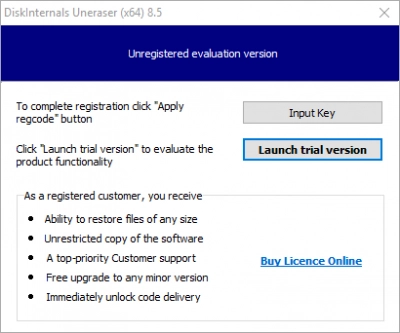
Download and install DiskInternals Uneraser software on the PC.
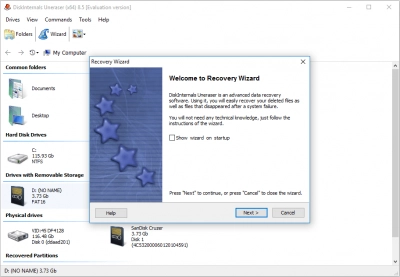
Step Two:
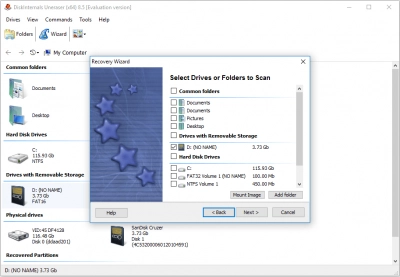
Select the file formats you want to recover (you can select all file types) and proceed with choosing Full Recovery mode.
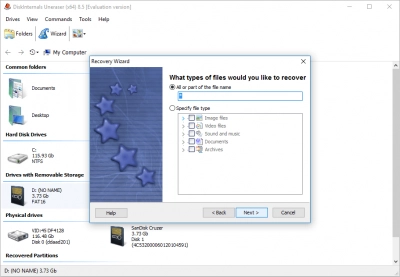
Step Three:
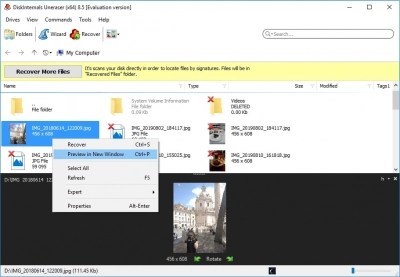
Wait for the scan to run completely (it may take a long time, depending on the data volume), and you’ll see the permanently deleted files marked with a red asterisk. You can preview the recovered files for free before proceeding to re-save them or export to remote storage via FTP.
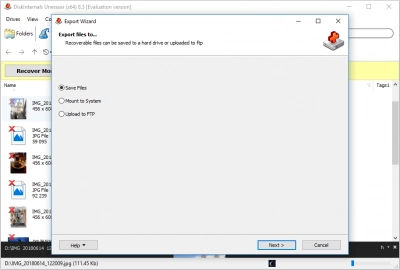
If you can't find the files you wanted to recover, try DiskInternals Partition Recovery, it also allows you to scan corrupt flash drives and preview the recovered files for free. When you finally find the files you want to access, you will need to upgrade to the PRO version of the DiskInternals software you chose before you can save the files back to your PC.
Recovering Files from a Logically Corrupted USB
When a USB drive or flash drive is logically corrupt, it won't appear in File Explorer when you plug it into a computer, thereby making it difficult to scan the drive and attempt to recover your important files. Storage drives can get logically damaged due to quite many reasons, but not to worry, there's a way around it – here's how to deal with logically corrupted USB drives.
1. Set a New Drive Letter
To start with, you need to assign a drive letter to the USB drive, and this has to be done through the Disk Management page. Basically, even though the flash drive isn't showing on File Explorer, for the fact it is connected to your PC, you'd find it in Disk Management.
- Press the Windows Key + X and select Disk Management
- Right-click on the USB flash drive's number and choose the "Change Driver Letter" option
- Delete the existing drive letter and enter a new one from the drop-down list
- After changing the drive letter, go back to File Explorer and try to access the drive.
2. Reinstall/Update the Drivers
Sometimes the issue is driver updates – try reinstalling or updating your Disk Drivers and see if the issue is fixed. To do this, go to Windows Device Manager, look out for the disk drivers tab, expand it and update all the drivers you see there; you can as well uninstall those drivers and restart your PC, and they'd automatically reinstall as the system boots.
3. Use CMD To Check For Device Errors
Open Windows Command Prompt as an administrator and run the CHKDSK command: chkdsk E: /r /f. Remember to replace "E" with the actual drive letter of your USB drive.
4. Use Data Recovery Software
A data recovery software may be your best bet if all methods explained below don't work for you. DiskInternals Partition Recovery is a professional solution that can help you repair corrupt/damaged USB flash drives, as well as recover your files from the drives.
Step One:
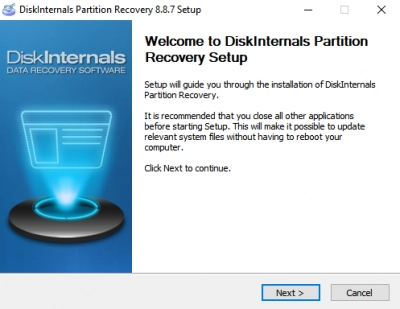
Download and install DiskInternals Partition Recovery software on the PC. Then launch the recovery software.
Step Two:
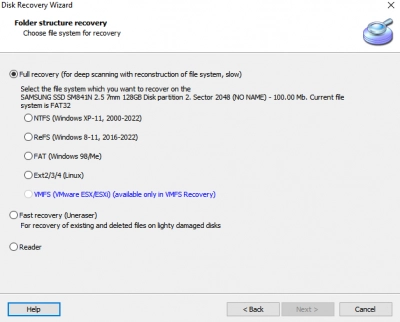
Select the file formats you want to recover (you can select all file types) and proceed with choosing a recovery mode. The Fast Recovery (Uneraser) option recovers recently deleted data; choose the Full Recovery option for wholesome recovery.
Step Three:
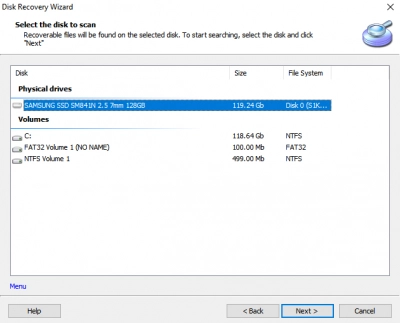
Wait for the scan to run completely (it may take a long time, depending on the data volume), and you’ll see all your lost files indicated with a red asterisk. You can preview the recovered files for free before proceeding to re-save them or export to a remote storage via FTP.
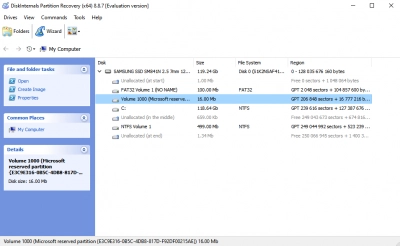
Note: While file preview is free, saving the recovered files requires the license.
Recovering Files from a Physically Damaged USB
If the USB drive is physically damaged, it may be difficult – if not impossible – to still get back your files from the drive. However, hereunder are some tips that may work for you.
1. Adjust the USB
When you insert the USB, try wiggling it gently to see if the computer will recognize it. Sometimes, the issue could be the flash drive's touchpoint having slight touches, so wiggling the drive could make it come in contact with the pins in the PC's USB connection port, and then the drive will appear in Windows Explorer.
2. Check for Any Debris Obstruction
There could be tiny debris in the USB flash drive's pin or the connection port on your PC. Hence, you should check the two ports/pins for possible debris and tiny particles that may be hiding inside. If you find any, blow them off or try using a pin to remove them carefully. After that, reinsert the USB drive and check if your computer can read and open it.
3. Recover Corrupted USB by Contacting Professional Recovery Services
If you tried all that has been shared in this article and yet could not get your files from a problematic flash drive, your next best bet is to contact a professional recovery service center. In such centers, specialized tools are used to try reading and access the data stored in the flash drive – they can help you retrieve your files so you can save them on another drive.
Conclusion
Here we have carefully analyzed how to fix corrupted USB drives and recover files from corrupted flash drives. DiskInternals Uneraser and Partition Recovery are two impressive data recovery tools used by many PC owners to recover lost files from any storage media, regardless of the data loss scenario.
FAQ
How do you fix a USB flash drive that is not recognized?
1. Open Device Manager and then disconnect the USB device from your computer.
2. Wait a few moments, and then reconnect the device.
3. Connect the USB device to another USB port.
4. Connect the USB device to another computer.
5. Update the USB device drivers.
6. If nothing helps, use DiskInternals Uneraser or Partition Recovery.
How to open files on a corrupted USB drive?
1. Insert the USB stick into the computer's system port.
2. Launch DiskInternals Uneraser USB data recovery software on your PC.
3. Click the USB and click Scan.
4. After the scan, choose the target files and click "Recover" to save them to a secure location on your PC.
Can I fix a corrupted USB flash drive without losing data?
Yes, absolutely. Use DiskInternals Uneraser or Partition Recovery professional software and be sure your data is safe.
How can I recover files from a corrupted USB for free?
Use DiskInternals Uneraser or Partition Recovery professional software to recover your files for free. After preview, if everything is OK, purchase the license to save your files.
How to recover corrupted USB files?
If you need to recover corrupted files from a USB drive, follow these steps:
- Connect the corrupted flash drive to your computer.
- Download and install Disk Drill, a data recovery software.
- Launch Disk Drill and select the drive that contains the corrupted files.
- Click on "Search for lost data" to start scanning the drive.
- Once the scan is complete, select the corrupted files you want to recover.
- Click on the "Recover" button and choose a safe destination to save the recovered files.
How to open files on a corrupted USB drive?
To open files on a corrupted USB drive, you can do two things:1. If the USB drive is not recognized or you cannot access the files, try using data recovery software to recover the files.
2. If you are still unable to open the recovered files, the files may be damaged beyond repair. In this case, you may need to recreate the files from scratch or obtain a backup copy if available.
